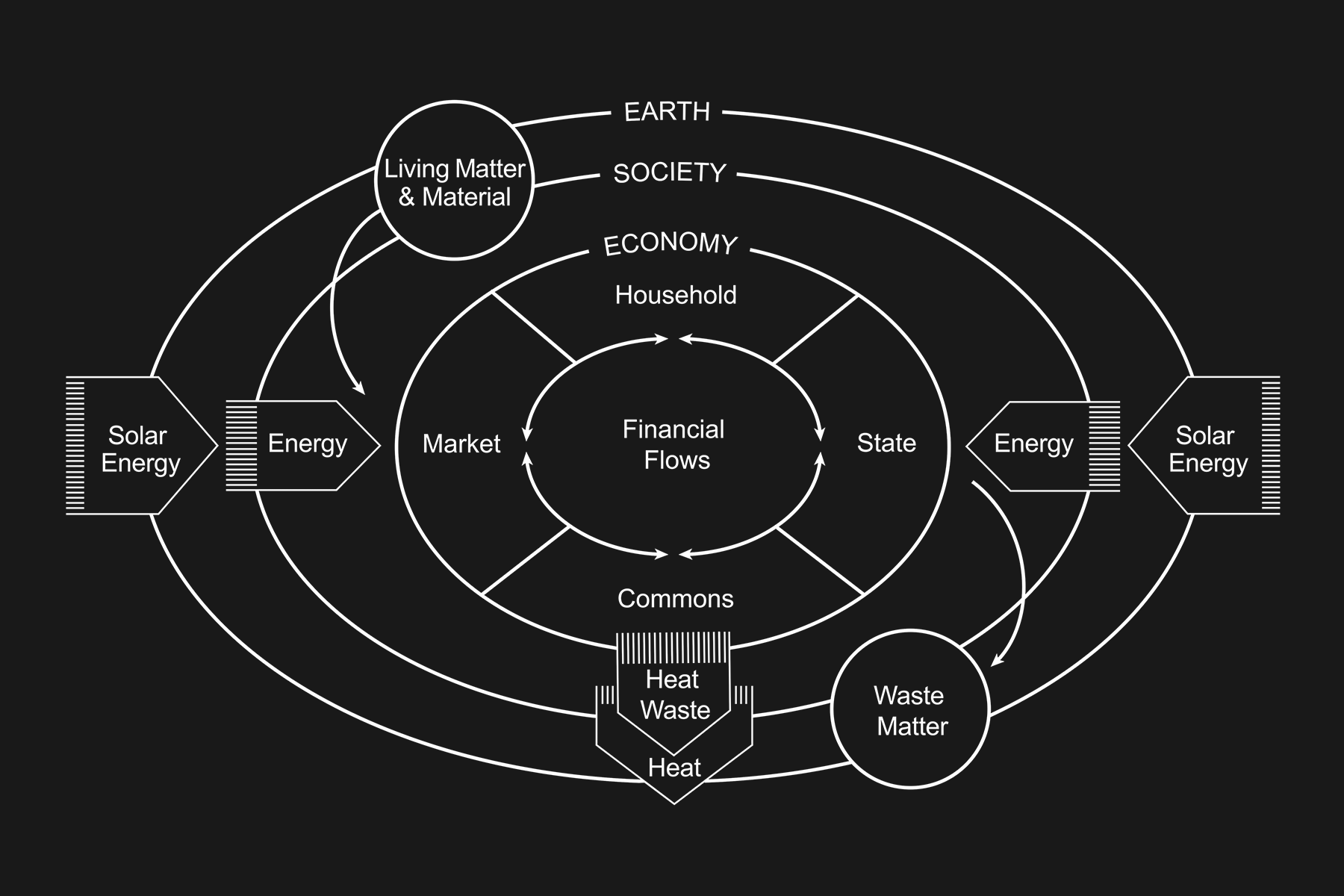Post Growth: Internal Growth
“The U.S. has the biggest GDP in the world, but it ranks only 18th on the happiness scale—a pie in the face for economists or politicians who insist that GDP is the best way to measure progress.”

Chloe Stead is an art critic and editor based in Berlin. Her writing has been featured in publications such as Artnet, Art Agenda, Frieze, Spike, and Mousse Magazine.
Determined to not let lockdown blues get the better of me, I started 2021 by buying myself a gratitude journal. Turquoise and hardbound with gold lettering on the cover, this rather beautiful object has quickly become part of my morning routine, and while I wouldn’t say it’s changed my life, I have noticed that taking a few minutes each day to write down what I’m grateful for has produced a subtle shift in how I think. In the past, I’ve been guilty of treating success as a constantly moving goalpost, but regular journaling has encouraged me to celebrate even the smallest of wins, which, during lockdown, might be as simple as preparing myself a healthy lunch or checking in on a friend.
It might sound a little sentimental, but what my new routine has taught me is to value internal as well as external growth. It’s a realization that I’m sure anthropologist Valerie Olson, who I quoted in the introduction to this dossier, would be happy to hear. Speaking with DISNOVATION for the project’s interview series, Olson argued that western society has a “prejudice or a bias toward thinking about growth externally,” which blocks us from “using other knowledges than western knowledges to think about internal growth, or internal transformation as being another valuable focus for energy.”
Watching this interview again, I couldn’t help but think of the UN’s World Happiness Report, which measures countries on factors such as social help and freedom to make life choices rather than solely on their GDP. Unsurprisingly, it’s poor countries in long protracted conflicts, such as Yemen and Afghanistan, which fair the worst, but the fact that it’s Finland that has won the top spot for the last three years suggests that the size or power of a country has a limited effect on the happiness of its citizens. Take the U.S. as an example. It has the biggest GDP in the world, closely followed by China, but it ranks only 18th on the happiness scale—a pie in the face for economists or politicians who insist that GDP is the best way to measure progress.
What if, instead of focusing on production capacity and economic growth, we started to take attempts to measure internal transformation more seriously? What would change if the American media reflected on these reports rather than mock or underplay them, such as one article in which the author called a Pew Research Center survey “complete crap” because Nicaragua was above “wealthy Japan”?20 One result might be that more countries adopt universal healthcare, free education, and a higher minimum wage, all of which are common in the countries that repeatedly top these lists. It might seem like a pipe dream right now, but it’s something that we should strive for, nonetheless. To quote a motivational phrase from my gratitude journal: “Whether you think you can, or you think you can’t—you’re right.”21
Post Growth
Life, After the CrashExplore more of "Post Growth:"
→ HOLO.mg/stream/
→ HOLO.mg/imal-post-growth/
